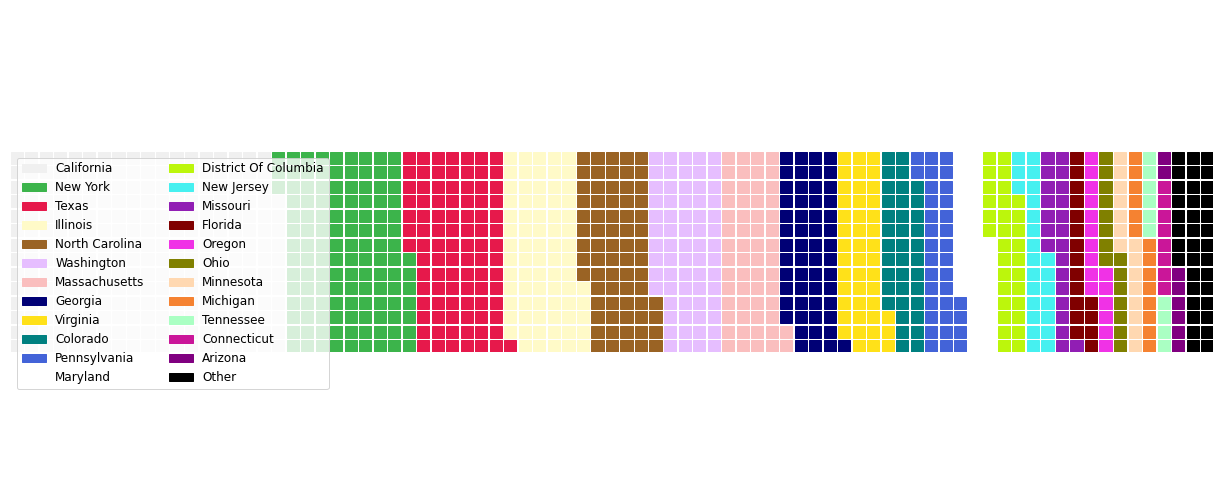I. Job Title¶
This section looks at the title of each job. As of 2021.04.21, I have applied to 1,162 jobs.
- I eliminated all non alphabetical characters.
- A recurring theme in job titles was numbering, such as "Data Analyst II" or "Data Scientist III". Since I had already eliminated numbers, I needed to eliminate Roman Numerals (only I, II, and III).
- I had some false negatives, so I fixed those.
- "AR VR" was changed back to "AR/VR" for one title.
- "C C" was changed back to "C2C" for one title.
- "Microsoft" was changed to "Microsoft-365" for one title.
- "Non IT" was changed back to "Non-IT" for one title.
- "E Commerce" was changed back to "E-Commerce" for one title.
- Words were then tallied.
Top 10 Words¶

Some of the Bottom Words¶
There are many words that only occured once. Here are some of them.

WordCloud¶
I thought a word cloud would be a fun representation to look at the job titles. The proportional size has been rescaled.

